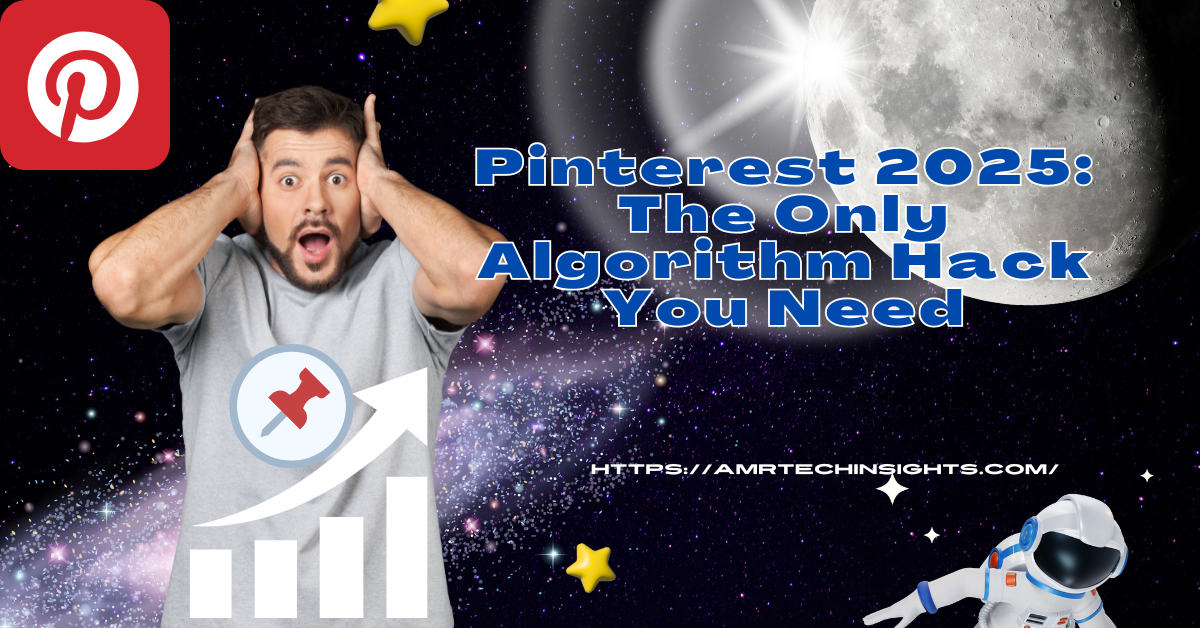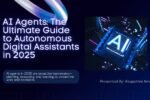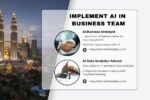AI is changing the way we work, produce, and consume information at an incredible rate. Pinterest 2025 is a social media platform quietly shaping the future of visual content. By 2025, it will no longer be optional to understand how its algorithm works. Anyone who wants to get more attention, increase engagement, and take advantage of AI-driven possibilities will need to do this.
What type of “algorithm hack” would be beneficial for you? It’s not so much about gimmicks as it is about knowing how AI may help with content prediction, visual search, and customization. You may reach the appropriate people at the right time-and sometimes even before your rivals think of posting-by making sure your approach fits with these trends. Let’s take a closer look at the future.
The AI-Powered Discovery Revolution
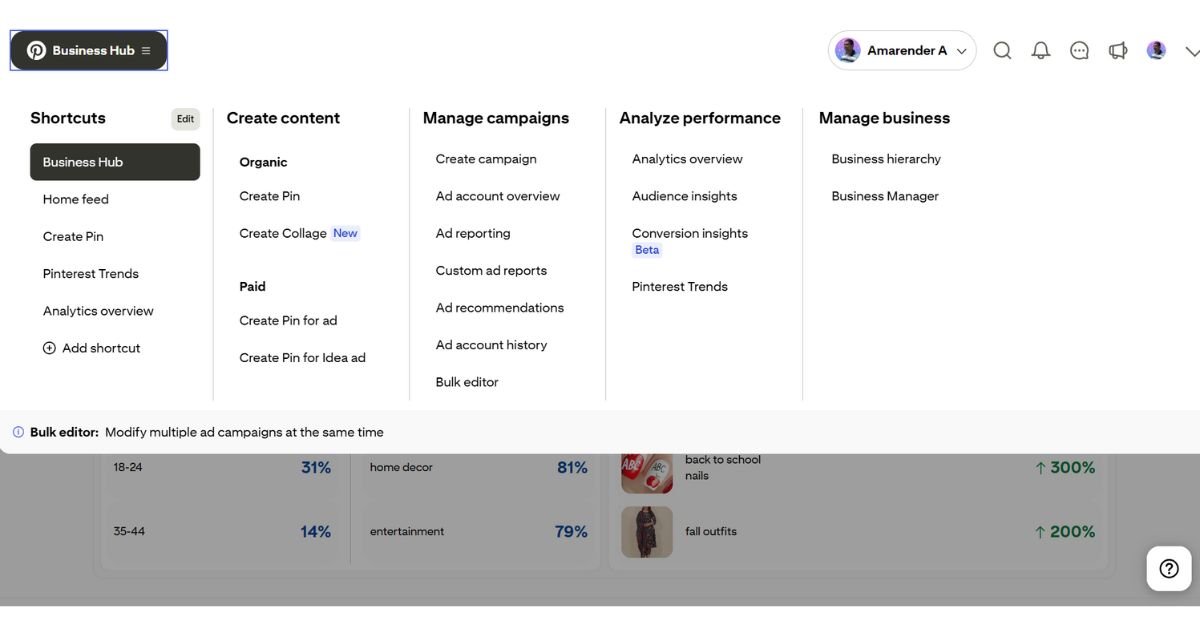
This picture shows what the Pinterest for business accounts home page looks like. You can access the Home Feed, the Business Hub, Pinterest Trends, and a quick look at analytics. It makes it easy to get insights, see what’s popular, and keep track of engagement numbers. For artists and businesses, it’s quite important to know how to use this dashboard to improve their content strategy.
Finding new things is what Pinterest is all about. People come to get ideas for DIY projects, recipes, home decor, fashion trends, health suggestions, and more. AI will make this finding process smarter aad quicker than before by 2025. Pinterest’s algorithm will not only show people what they are looking for, but it will also guess what they haven’t realized they want yet.
For creators and businesses, understanding this dashboard is crucial to optimize content strategy. You can also check our guide, 7 Essential Tips for Successful Retail Media Strategy Sales, for actionable strategies to boost visibility.
AI doesn’t only show your audience what they want; it also guesses what they will want next. In 2025, Pinterest feeds will be full of stuff made using AI by those who got it early.
Search by Picture: This AI-driven revolution is central to Pinterest 2025. The platform can now analyze billions of images to identify colors, shapes, patterns, and objects. Soon, it will even predict which trends will gain popularity before they happen. For instance, an early AI study might detect that eco-friendly kitchen designs are trending. Pinterest 2025 could then suggest these pins to environmentally-conscious users before the trend reaches platforms like Instagram or TikTok.
The result means that businesses need to do more than just use keywords to optimize their content. AI will put visual narrative first. If your pictures match what AI thinks will happen, they will show up higher in feeds, sometimes even before your competitors know the trend is happening.
For example, a tiny home décor firm used AI to evaluate different color palettes for their pins. On Pinterest 2025, their eco-friendly kitchen designs received 40% more saves and clicks than other posts. This demonstrates how aligning with AI insights on Pinterest 2025 can significantly boost engagement almost immediately.
Predictive Content Engagement on Pinterest 2025
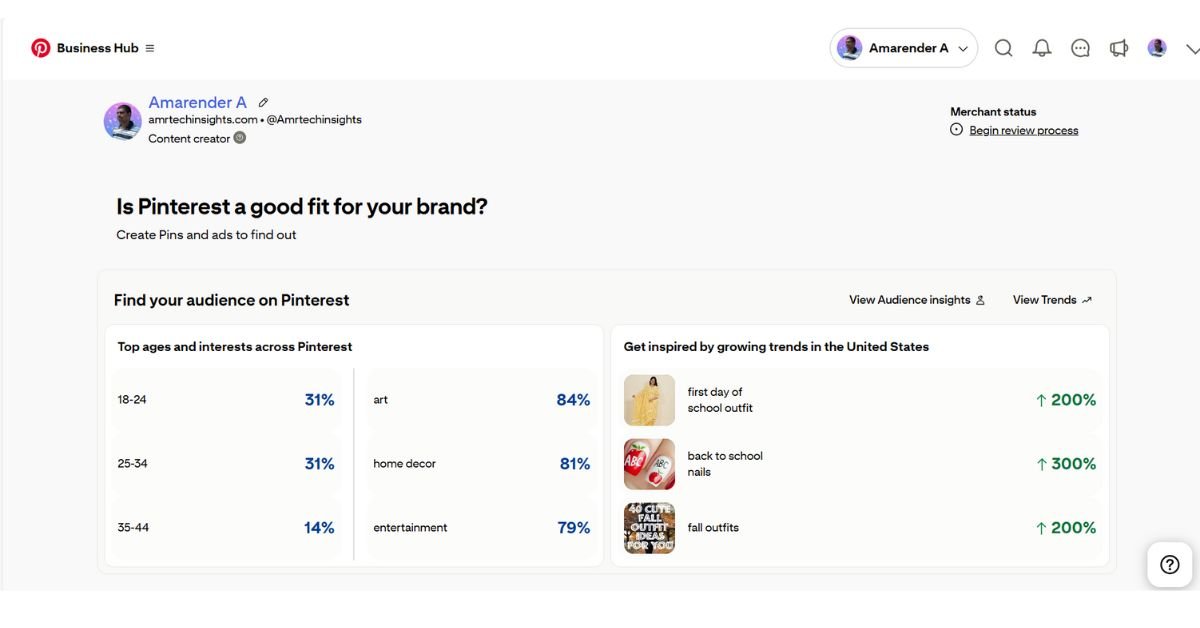
This snapshot shows a personal Pinterest account view, which includes boards, saved pins, and stats for interaction. Looking at your account might help you learn how Pinterest arranges material for different people. It also gives you an idea of how AI-powered suggestions affect how visible stuff is.
Pinterest 2025 is moving toward predictive engagement. The platform can now anticipate which pins a user is most likely to save, click, or share. Its algorithm considers visual features, past interactions, trending topics, and even seasonal patterns to deliver highly personalized content.
The change is a big deal for marketers. AI can advise the optimal type, structure, and style of content to post, instead of just giving you a list of times to post. For instance, a fitness blogger who writes about “morning routines for busy professionals” could find that infographics do better than images at 7 a.m., while short videos do better in the evening.
A food blogger tested different AI-recommended thumbnail options for her posts as a mini case study. On Pinterest 2025, AI-optimized pins achieved a 32% higher save rate and a 27% higher click-through rate over the course of a month. This example highlights how predictive content methods on Pinterest 2025 can significantly improve engagement.
The Rise of AI-Generated and AI-Refined Pins on Pinterest 2025
By 2025, Pinterest will significantly embrace AI-generated content. This is more than just plain visuals; it also contains visually captivating, highly individualized pins that are designed to get people to interact with them. Canva AI, Adobe Firefly, and MidJourney are just a few examples of platforms that let designers make high-quality images in only a few minutes.
The real “hack” on Pinterest 2025 is combining human creativity with AI refinement. For example, a fashion influencer might take multiple photos of the same outfit in different settings, lighting, and styles. AI can then predict which version will resonate most with her audience, maximizing engagement without repeated trial and error.
A tiny bakery, for example, utilized AI-generated pictures to try out several cake designs. They found that pastel-colored cakes with simple backdrops worked best by looking at expected engagement. This led to a 25% increase in orders during busy times.
Hyper-Personalization and Small Groups on Pinterest 2025
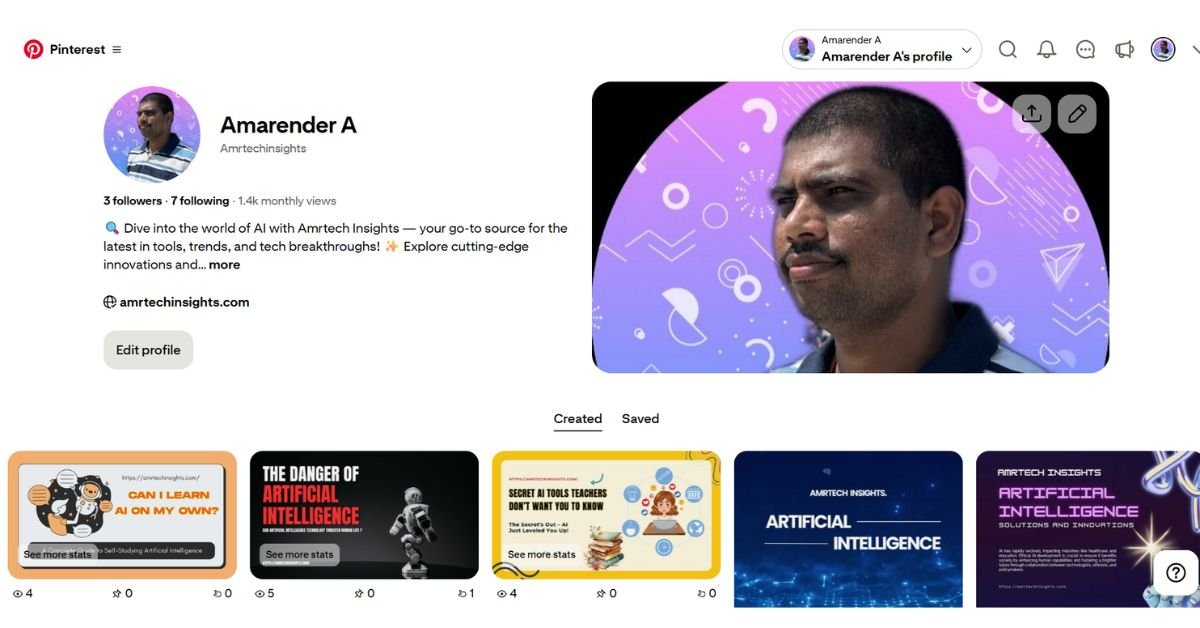
You can see the profile picture and “About Me” section on my Pinterest profile here. Profiles are an important aspect of customization since AI algorithms utilize bio information to propose followers and material that is relevant to you. Improving your profile may greatly increase the number of people who see your content.
Pinterest’s algorithm is becoming better at personalizing things. By 2025, users won’t simply see broad material; they’ll see pins that are exactly right for their preferences, habits, and even emotions. AI will look at more than just what people save. It will also analyze the user’s scrolling patterns, the duration of time spent on specific information, and the content they skip.
This creates numerous opportunities for specialized content. Targeting a wide range of people won’t work as well anymore. Instead, success will come from learning about microcommunities and making content just for them.
For example, a yoga teacher aiming to reach “morning meditation routines for busy professionals” can now use AI to discover when their audience is most active, which picture style works best, and which keywords receive the most saves. What happened? This approach leads to increased engagement without the need for additional material.
Forecasting Trends Using AI on Pinterest 2025
Pinterest 2025 will be excellent at predicting trends. Its technology will use visual, textual, and interaction clues to guess which subjects will become popular, unlike other platforms. Brands that use this information can make content ahead of time for trends that haven’t yet become popular.
Pinterest’s algorithm will not only show people what they are looking for but also guess what they haven’t realized they want yet. You can read more about how Pinterest predicts trends on Pinterest’s Business Blog, for detailed insights.
For example, a cosmetics company saw AI trending forecasts that showed people were interested in “eco-conscious serums” months before they were popular with the general public. By publishing early, their pins showed up at the top of search results, which led to a 50% rise in traffic and revenue.
This capacity to foresee changes transforms Pinterest from a static platform into a dynamic marketing tool. Instead of chasing trends, creators and companies can capitalize on them.
Problems and limits
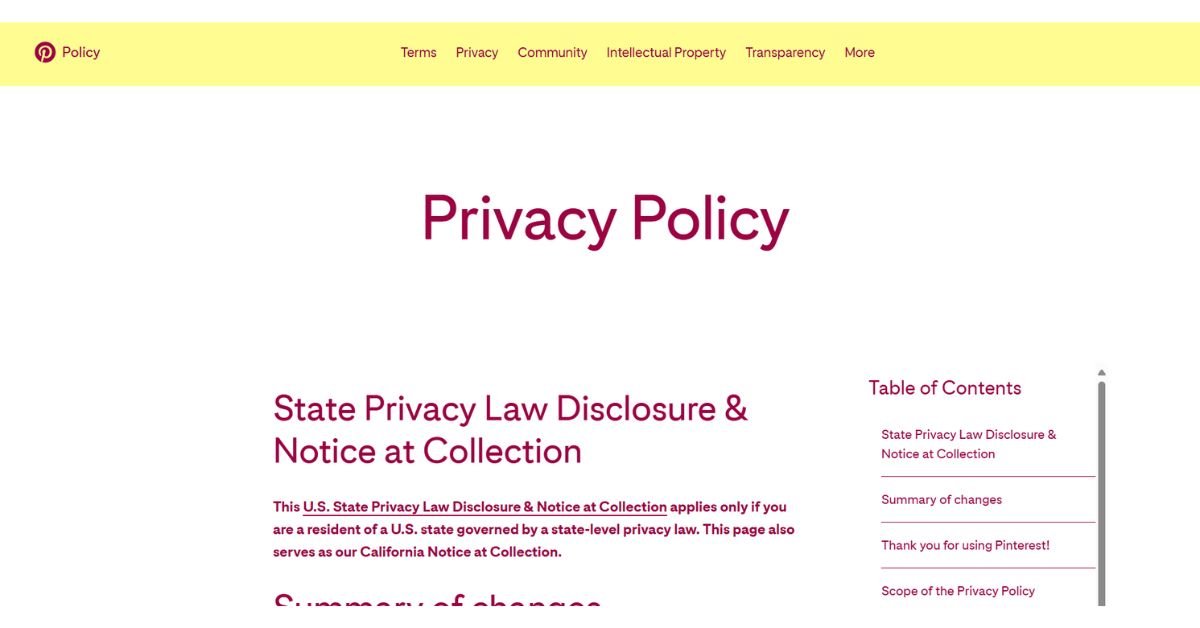
This screenshot shows Pinterest’s privacy policy page, which explains how they gather, store, and safeguard user data. When looking at engagement, AI predictions, and customization capabilities, producers and users need to know about privacy restrictions. To be in line with the rules, always read the platform’s regulations.
While AI possesses significant potential, it also presents several challenges. If creators blindly follow AI forecasts, over-optimization might hinder innovation. Algorithmic bias may favor specific visual styles or trends, pushing specialized or experimental material to the side. Users and advertisers are still worried about privacy issues.
AI can help you plan, but people are still the ones that come up with new ideas. The best content is a mix of real stories and statistical insights.
The answer? Use real stories to balance AI findings. Don’t let AI replace your gut feeling; let it help you make decisions. Even in a world when AI is everywhere, human ingenuity and emotional connection are still important.
Strategies you can use in 2025
If you want to do well on Pinterest in 2025, try these tips:
- Make sure that your visuals are AI-friendly by using high-resolution photographs with clear topics, bright colors, and powerful composition.
- Utilize Predictive Insights: Experiment with various pin styles and monitor AI predictions to determine the most effective ones.
- Target Micro-Niches: Instead of trying to reach many people, focus on smaller groups to get more people involved.
- Combine AI with creativity: Let AI polish your ideas, but don’t lose your voice and perspective.
- Maintain flexibility by monitoring your metrics to adapt to emerging algorithms and patterns.
- Try trying different formats: AI can predict that videos, infographics, and carousel pins will get more engagement than static photographs.
- Use Seasonal Insights: AI can find seasonal patterns before they reach their peak, which lets you get ready for them early.
- By using these tactics, designers may use AI to reach as many people as possible while still being original.
In conclusion, AI-powered discovery is the future.
Pinterest 2025 is evolving into a fully AI-powered discovery platform. Its system will guess what users want, predict trends, and provide them material that is very specific to them. The “algorithm hack” isn’t a quick fix; it’s a profound grasp of how AI can anticipate things and how it can be used to make content.
What is the primary takeaway? AI makes people more creative. Creators may achieve the most engagement and influence by using predictive data, visual storytelling, and specialty targeting all at once. Please begin experimenting by creating enhanced images with AI, exploring tactics for predicting interaction, and developing content for emerging trends. This method will set the best pins and profitable companies on Pinterest by 2025.
AI will never take the place of human creativity; it will only improve it. In a world where AI enables discovery, inspiration, and connection, people who consciously embrace this future, mixing data-driven insights with real stories, will do well. Pinterest 2025 is more than simply a platform; it’s your AI-powered growth partner.
Disclaimer: There are screenshots and examples from Pinterest on this blog to show how features, trends, and AI-driven strategies work. For privacy reasons, all personal account information is kept secret. Pinterest, Inc. still owns all of its trademarks, logos, and other material. This content is meant for educational and informative reasons and is not official advice from Pinterest.
Last updated on August 31, 2025
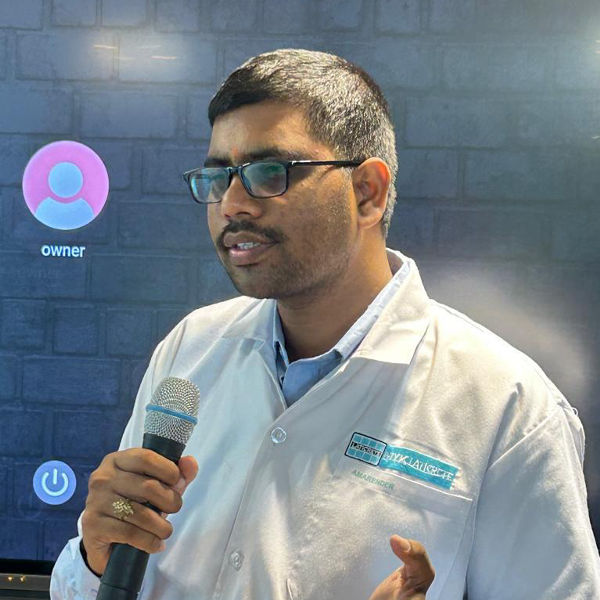
Hi, I’m Amarender Akupathni — founder of Amrtech Insights and a tech enthusiast passionate about AI and innovation. With 10+ years in science and R&D, I simplify complex technologies to help others stay ahead in the digital era.
